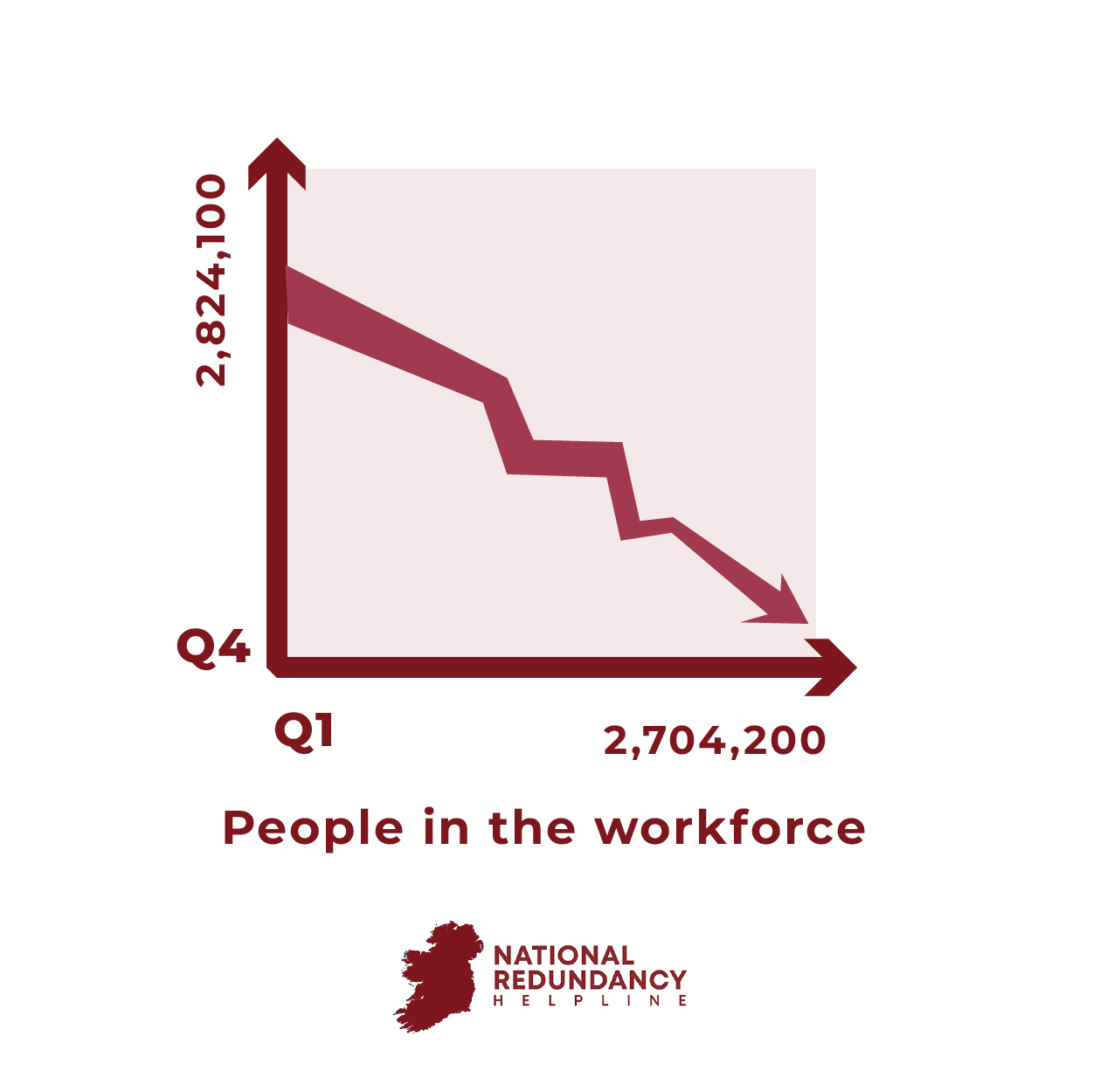It may be. As if the post Christmas slump wasn’t bad enough, it has always been suggested that January brings a seasonal rise in job losses and redundancies.
This is attributed to companies adjusting their budgets for the new year or responding to a challenging business environment as well as seasonal jobs ending.
The opposite is also true with January also seen as a key month for hiring surges with workers keen to take up a new position.

January redundancies
The Labour Force Survey is published every quarter by the Central Statistics Office and provides the official employment and unemployment figures.
Figures from the CSO Labour Force Survey for the fourth quarter of 2023 give a figure of 2,824,1000 persons aged between 15 and 89 at work. With the corresponding figure for the first quarter of 2024 being 2,704,200.
Although this difference may not be fully accounted for by new year redundancies, it still is notable given that year on year trends suggest employment growth overall.

Seasonal trends
So, are there monthly trends or patterns in hiring employees or making workers redundant? Yes, it would appear so to some extent.
In January, businesses may have done their financial planning and will likely have fresh budgets which may mean more recruitment or conversely, redundancies where business is less favourable.
Later throughout March, April, and May, companies may wish to add to their team before a summer holiday slowdown, traditionally seen in the months of July and August. Graduate and entry level roles may be advertised at this time to attract new entrants to the jobs market ahead of the competition.
September brings a fresh emphasis on recruitment as schools return and workers return from holidays with jobs website data suggesting an increase in new positions advertised of over a third in the UK and almost double in France.
Later in the year, seasonal hiring may commence and this brings us back to December and January’s redundancies or fresh recruitment.
Variations
There can, however, be variations in this pattern by location and by sector. For example seasonal employment boosts such as tourism in Summer and retail in the months leading up to Christmas.
Regions of the world where holidays and calendars vary may also experience different recruitment and redundancy patterns.
In China, with the new year return to work occurring in March, hiring can be one third higher at this time. Where Ramadan means that employees may be only permitted to work for six hours a day, recruitment may be paused during this period in regions where Ramadan is widely observed.
Local factors
Local factors can also lead to an increase in redundancies or boosts or dips in recruitment.
For example, in the Irish jobs market in 2025, reports suggest that redundancies are increasing early in the year and the number of new positions advertised is decreasing.
These labour market conditions may mean that workers are less inclined to embark on a job search and more inclined to stay in their current roles.
Local media reports of Irish redundancies, particularly in the tech, media, and retail sectors, may be further encouraging Irish workers away from seeking new opportunities and holding onto their current positions.
Redundancy advice
Employers may wish to consider laying workers off for business reasons, such as a response to poor trading conditions or budget constraints in December or January, and January especially is a peak time for job losses.
An employer must ensure that they carry out redundancies fairly and fulfil certain conditions in order to make an employee legally redundant.
There must be a genuine business reason for making an employee, or employees, redundant. An employee cannot be made redundant due to their conduct, qualifications, or performance in their role.
There may be a last in first out selection process or another set of objective criteria may be used. Voluntary redundancy may be offered before compulsory redundancy
Employees are entitled to notice in writing and a minimum paid notice period when being made redundant. This will depend on their length of service.
Employees of longer than 104 weeks who are older than 16 will also be entitled to redundancy pay, or statutory redundancy. Rates of payment are calculated based on final salary and length of service.
Redundancy pay for seasonal workers
If you are a seasonal worker and you are made redundant, you may qualify for redundancy pay depending on your circumstances.
If you have worked for your employer for at least two years, excluding off season times when you are not working for that employer, and you are not re-hired you may be entitled to a statutory redundancy lump sum.
National Redundancy Helpline
National Redundancy Helpline brings you blog articles and news on all matters related to redundancy as part of our commitment to giving you impartial information and advice on redundancy.
Fill in our online assessment or call us now if you are in a redundancy situation.
We offer free advice and support from a vetted panel of redundancy advisors and we can evaluate your employer’s redundancy offer as well as examine the tax and pension implications for you.



